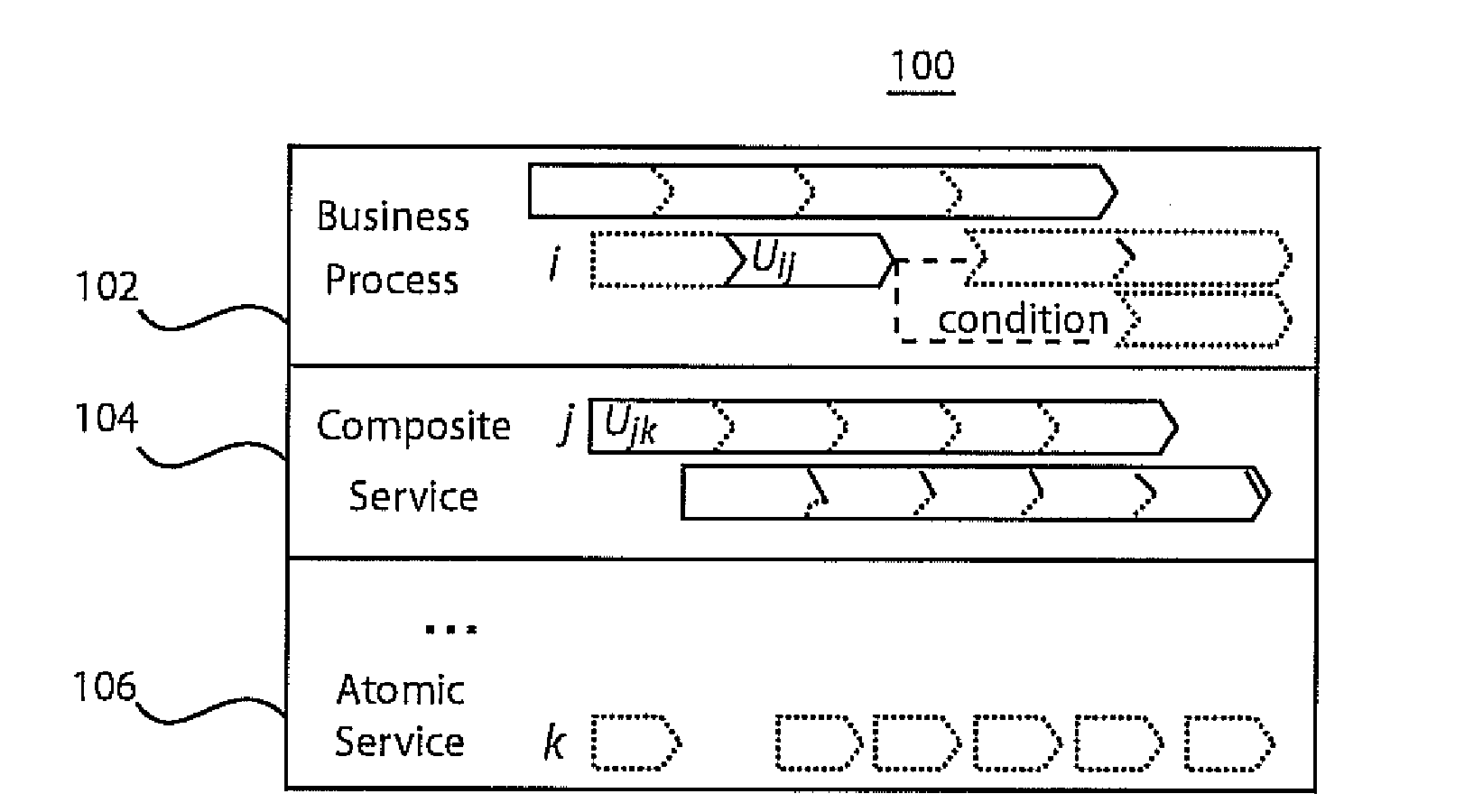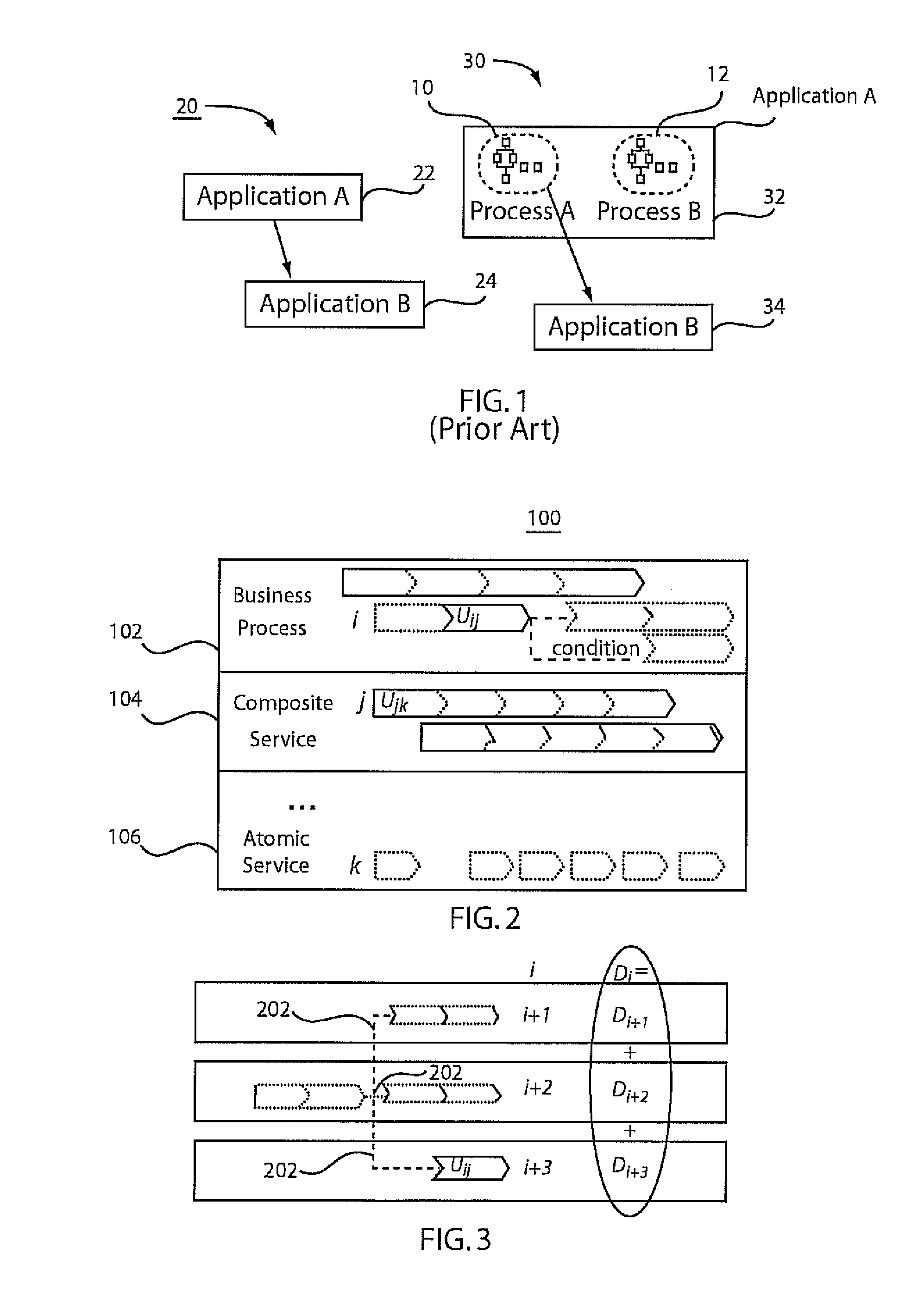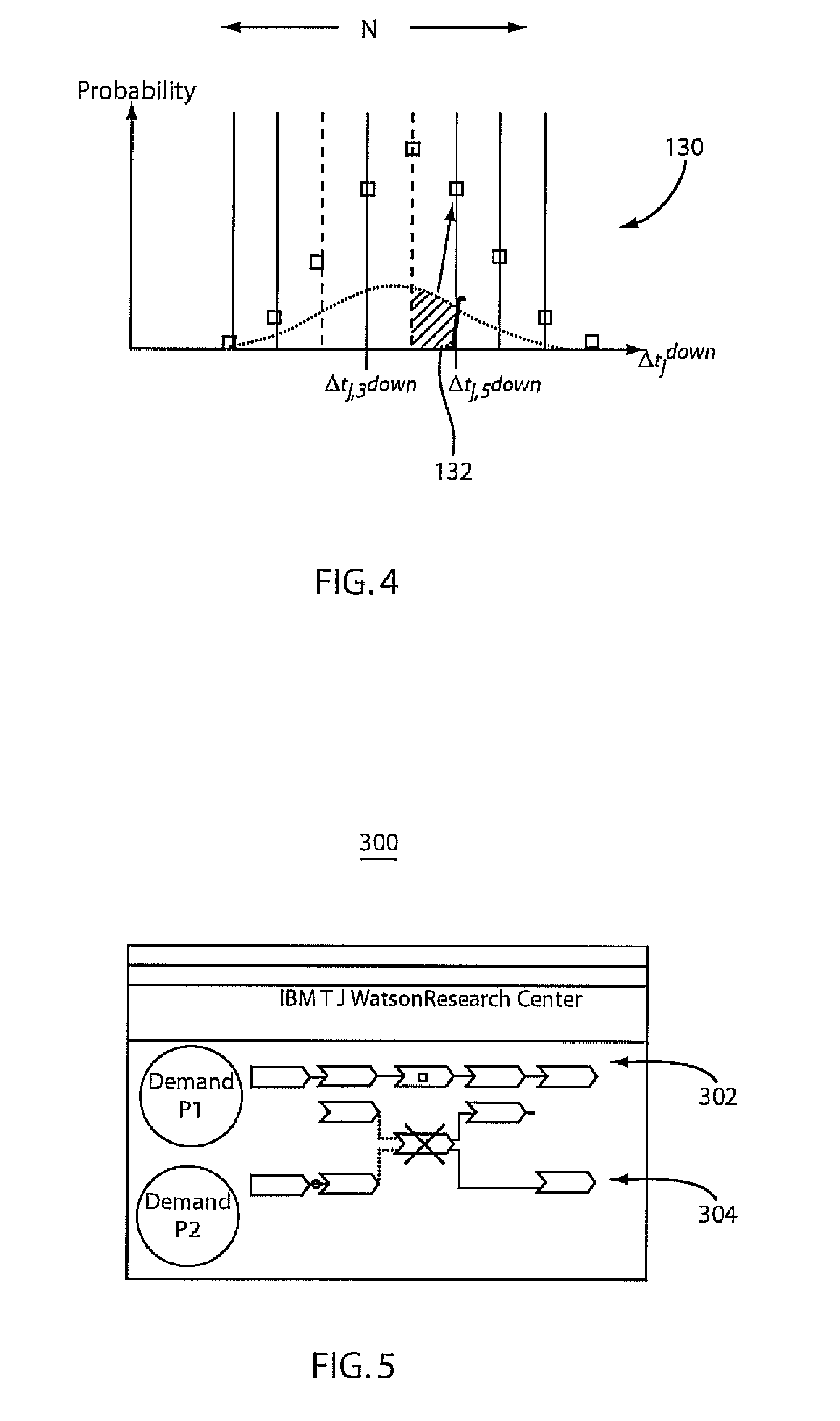System and method for automated decision support for service transition management
a service transition and decision support technology, applied in the field of risk management, can solve the problems of large business-critical service disruption, relatively manageable problems, and changes in this kind of environment, and achieve the effects of minimizing change related risks, minimizing the risk of downtime, and minimizing the risk of financial loss
- Summary
- Abstract
- Description
- Claims
- Application Information
AI Technical Summary
Benefits of technology
Problems solved by technology
Method used
Image
Examples
Embodiment Construction
[0024]In accordance with the present principles, models for analyzing business impact of operational risks resulting from change related service downtimes of uncertain duration are provided. One solution takes into account the network of dependencies between services where services may or may not be realized through business processes. Based on the analytical model, we derive decision models in terms of deterministic and probabilistic mathematical programming formulations to schedule single or multiple correlated changes efficiently. Preliminary experiments are described to illustrate the efficiency of the models. Using these decision models, organizations can schedule service changes with the lowest expected impact on the business.
[0025]In IT service delivery, alignment of service infrastructures to continuously changing business requirements is a primary cost driver, as most severe service disruptions can be attributed to poor change impact and risk assessment. We distinguish betw...
PUM
 Login to View More
Login to View More Abstract
Description
Claims
Application Information
 Login to View More
Login to View More - R&D
- Intellectual Property
- Life Sciences
- Materials
- Tech Scout
- Unparalleled Data Quality
- Higher Quality Content
- 60% Fewer Hallucinations
Browse by: Latest US Patents, China's latest patents, Technical Efficacy Thesaurus, Application Domain, Technology Topic, Popular Technical Reports.
© 2025 PatSnap. All rights reserved.Legal|Privacy policy|Modern Slavery Act Transparency Statement|Sitemap|About US| Contact US: help@patsnap.com



